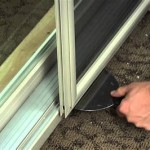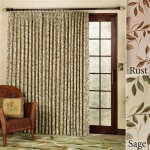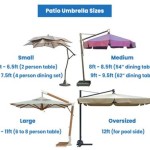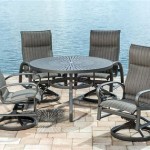Enhancing Outdoor Living Spaces: A Guide to Patio Furniture in Ontario
Ontario residents understand the value of maximizing outdoor living spaces. From the vibrant summers to the crisp autumn days, a well-furnished patio extends the functional area of a home and provides a sanctuary for relaxation, entertainment, and connection with nature. Selecting the right patio furniture is a crucial step in creating this inviting environment. This article provides a comprehensive guide to navigating the world of patio furniture in Ontario, considering factors such as material durability, style considerations, and climate-appropriate choices.
The availability of patio furniture in Ontario reflects the diverse needs and preferences of its residents. Options range from budget-friendly sets to high-end, custom-designed pieces. Understanding the nuances of different furniture types, materials, and construction techniques is essential for making informed purchasing decisions that balance aesthetics, functionality, and longevity.
Key Point 1: Understanding Material Durability in Ontario's Climate
Ontario's climate presents unique challenges for outdoor furniture. The province experiences significant temperature fluctuations, including hot summers, cold winters, and periods of heavy precipitation. Therefore, material selection is paramount for ensuring that patio furniture withstands the elements and maintains its appearance over time.
Wicker: Natural wicker, while aesthetically pleasing, is often not suitable for direct exposure to Ontario's weather. It can degrade quickly due to moisture and sunlight. Synthetic wicker, made from durable materials like polyethylene, offers a more resilient alternative. It resists fading, cracking, and warping, making it a popular choice for outdoor furniture in the region.
Wood: Wood offers a classic and natural aesthetic. Teak, a dense hardwood, is known for its natural oils that protect it from moisture and decay. It weathers to a beautiful silver-gray color over time. Other wood options, such as cedar and acacia, require regular maintenance with sealants and preservatives to prevent warping and rotting. Pressure-treated lumber can also be used, but it may not have the same aesthetic appeal as hardwoods.
Metal: Metal furniture offers durability and strength. Aluminum is a lightweight and rust-resistant option, ideal for areas prone to moisture. Powder-coated aluminum provides enhanced protection against scratches and fading. Steel, while strong, is susceptible to rust and corrosion if not properly treated. Stainless steel is a more expensive but highly durable option, suitable for areas with high humidity or saltwater exposure. Wrought iron offers a classic, heavier look but requires regular maintenance to prevent rust.
Resin/Plastic: Resin or plastic furniture is typically the most affordable option. High-density polyethylene (HDPE) is a durable type of plastic that is resistant to fading, cracking, and warping. It is also easy to clean and maintain. Recycled plastic furniture is an environmentally friendly option that offers similar durability and weather resistance.
When selecting furniture materials, it is important to consider not only their resistance to the elements but also their weight and portability. Lighter materials, such as aluminum and resin, are easier to move around, while heavier materials, such as wrought iron and teak, provide more stability in windy conditions. Cushions and fabrics used on patio furniture should also be weather-resistant, with options like solution-dyed acrylic (e.g., Sunbrella) providing excellent fade and water resistance.
Key Point 2: Style Considerations and Patio Furniture Types
Patio furniture comes in a wide array of styles to complement various architectural designs and personal preferences. The choice of furniture should reflect the intended use of the outdoor space, whether for dining, lounging, or entertaining.
Dining Sets: These sets typically include a table and chairs, designed for outdoor meals and social gatherings. Table sizes vary to accommodate different numbers of people, ranging from small bistro sets for two to large rectangular tables for eight or more. Chair styles range from simple folding chairs to more elaborate armchairs with cushions. Consider the height of the table and chairs to ensure comfortable dining.
Lounge Sets: Lounge sets are designed for relaxation and comfort. They typically include sofas, loveseats, armchairs, and coffee tables. Sectional sofas offer versatility and can be configured to fit different patio layouts. Deep seating cushions provide enhanced comfort. Consider adding outdoor rugs and throw pillows to create a cozy and inviting lounge area.
Bistro Sets: These small, intimate sets are ideal for balconies, small patios, or decks. They typically include a small table and two chairs. Bistro sets are often foldable for easy storage. They are perfect for enjoying coffee in the morning or a glass of wine in the evening.
Adirondack Chairs: These classic chairs offer a relaxed and comfortable seating option. They are typically made from wood or plastic and feature a distinctive slanted back and wide armrests. Adirondack chairs are perfect for relaxing around a fire pit or enjoying the view.
Hammocks and Swings: Hammocks and swings provide a relaxing and playful seating option. Hammocks can be hung between trees or on a stand. Swings can be hung from a porch or pergola. Consider adding a cushion and pillows for added comfort.
Outdoor Bars and Serving Carts: These pieces are designed for entertaining guests. Outdoor bars provide a space to mix drinks and serve food. Serving carts offer portability and convenience. Consider adding a cooler or ice bucket to keep drinks cold.
When selecting patio furniture styles, consider the overall aesthetic of your home and garden. Choose furniture that complements the existing architecture and landscaping. Also, consider the scale of the furniture in relation to the size of your patio. Oversized furniture can make a small patio feel cramped, while undersized furniture can get lost in a large space. Using outdoor lighting can further enhance the ambiance of your patio and create a welcoming atmosphere.
Key Point 3: Sourcing and Maintaining Patio Furniture in Ontario
Finding the right patio furniture involves considering a variety of sources, including online retailers, local furniture stores, and specialty patio shops. Each option offers different advantages in terms of selection, price, and customer service.
Online Retailers: Online retailers offer a vast selection of patio furniture at competitive prices. However, it is important to carefully review product descriptions and customer reviews before making a purchase. Pay attention to shipping costs and return policies. Consider ordering swatches of fabrics or materials to ensure they meet your expectations.
Local Furniture Stores: Local furniture stores offer the opportunity to see and touch the furniture before making a purchase. Sales associates can provide expert advice and answer any questions you may have. Local stores may also offer delivery and assembly services. Support local businesses and check for seasonal sales and promotions.
Specialty Patio Shops: Specialty patio shops focus exclusively on outdoor furniture and accessories. They typically offer a curated selection of high-quality products and expert advice. These shops often carry brands that are not available at larger retailers. Expect to pay a premium for the expertise and specialized products.
Maintenance is crucial for extending the life of patio furniture. Regular cleaning and care can prevent damage from the elements and keep the furniture looking its best. Here are some tips for maintaining different types of patio furniture:
Wicker: Clean synthetic wicker with mild soap and water. Use a soft brush to remove dirt and debris. Avoid using harsh chemicals or abrasive cleaners. Store wicker furniture indoors during the winter months to prevent damage from snow and ice.
Wood: Apply a sealant or preservative to wood furniture regularly to protect it from moisture and UV rays. Clean wood furniture with mild soap and water. Use a soft brush to remove dirt and debris. Sand down any rough spots and reapply the sealant or preservative. Store wood furniture indoors or cover it with a waterproof cover during the winter months.
Metal: Clean metal furniture with mild soap and water. Use a soft cloth to remove dirt and debris. Apply a rust inhibitor to prevent corrosion. Touch up any scratches or chips in the paint. Store metal furniture indoors or cover it with a waterproof cover during the winter months.
Resin/Plastic: Clean resin or plastic furniture with mild soap and water. Use a soft cloth to remove dirt and debris. Avoid using harsh chemicals or abrasive cleaners. Store resin or plastic furniture indoors or cover it with a waterproof cover during the winter months.
Cushions and Fabrics: Clean cushions and fabrics regularly to prevent stains and mildew. Use mild soap and water to spot-clean stains. For more stubborn stains, use a fabric cleaner designed for outdoor use. Store cushions and fabrics indoors or in a waterproof container during the winter months.
By carefully selecting materials, styles, and sources, and by implementing a regular maintenance routine, Ontario residents can create outdoor living spaces that are both beautiful and functional, providing years of enjoyment.

Patio And Outdoor Furniture Lowe S

Ontario Patio Furniture Extreme Backyard Designs

Patio Outdoor Furniture Sets Chairs More

Patio Outdoor Furniture Distinctly

Wickerpark Patio Furniture Toronto Mississauga Gta Ontario

Patio Outdoor Furniture Distinctly

Stratford Collection General S Outdoor Furniture Patio In Toronto

Cr Plastic S Stratford Ontario Recycled Furniture

Creative Homescapes Patio Furniture

Xizzi Ontario Lake Gray 12 Piece Wicker Outdoor Patio Conversation Seating Set With Denim Blue Cushions Bla3012hddb The Home Depot








